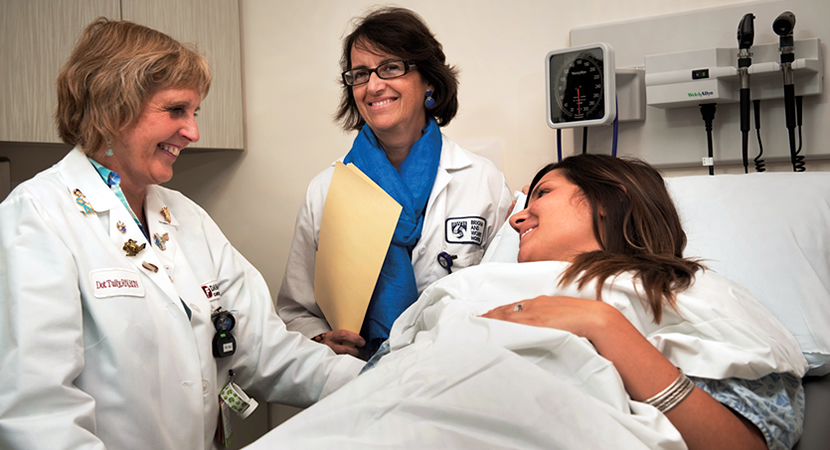
Fighting Chemo Allergies
Imagine being diagnosed with ovarian cancer and dealing with the emotional and physical tolls it takes on your body. During your third chemotherapy infusion appointment, you begin to feel flushed, swollen, and itchy. You are experiencing anaphylaxis—a life-threatening allergic reaction with symptoms including light-headedness; face, throat, and tongue swelling; difficulty breathing; and chest discomfort.
The horror of an anaphylactic reaction is upsetting enough, but the news that follows is most crippling. Your doctor informs you that you are allergic to your chemotherapy, the one treatment that might save your life.
Ten years ago, the only solution would be to downgrade to a second-choice treatment that would likely be less effective in halting your cancer. But today, Mariana Castells, MD, PhD, director of the Desensitization Program at Dana-Farber/Brigham and Women’s Cancer Center, director of the Allergy/Immunology Training Program, and associate director of the Mastocytosis Center at Brigham and Women’s Hospital (BWH), offers a solution known as rapid desensitization. Brigham and Women’s Hospital is one of very few places in the world where this treatment is available. “We are the only institution that has a standardized way of doing desensitization, which is why everyone turns to us,” explains Castells.
The best in the world
The protocol developed at Dana-Farber/Brigham and Women’s Cancer Center is the best in the world, Castells says. Intense laboratory research was the key to creating an algorithm that standardizes the practice and makes the process safe. “People ask me if I had an ‘A ha! moment,’ but no—it took a lot of research,” explains Castells, describing the work to calculate the correct dosage per infusion during the course of a typical six-hour desensitization session.
Brigham and Women’s Hospital, collaborating with Dana-Farber Cancer Institute (DFCI), has become the hub of desensitization and the central resource for patients and researchers, thanks to Castells and her colleagues. Today, Castells and her team desensitize approximately 80 to 100 cases per month—a number that in 1997 began in the single digits. Patients from all over the globe rely on Castells’s protocol to take their medications without reaction. “I have been training fellows for the last 10 years and travel to a different country each month to teach desensitization. It is a growing field with a new generation of experts,” says Castells.
One grateful patient, Barbara Osborne, was thrilled when she met with Castells and her team to begin desensitization. Seven years after being treated for breast cancer, Osborne began to feel ill again; she soon learned that her cancer had recurred and metastasized. Already knowing that she was allergic to her best chemotherapy option, Osborne was surprised that Castells could now treat her with the optimal drug choice without any allergic reaction. “I was very impressed with the movement in allergy treatment. The science was just not there seven years ago. Now I understand that medicine is an art as much as it is a science,” Osborne says.
“Dr. Castells, her colleagues, and nurses are the originators of something remarkable,” she adds. “Twenty years from now we may look back and laugh at some of our medical practices, but certainly not this. This is truly amazing.”
Photo Above: Dorothy Tully (left) and Mariana Castells, MD, PhD (center), see a potential desensitization patient in a clinic room.